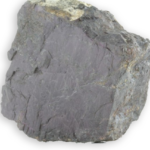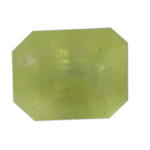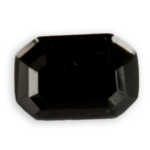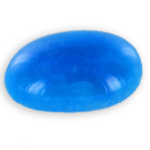
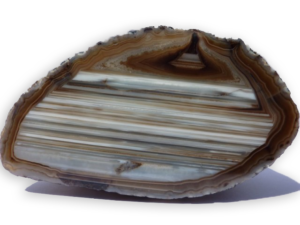
agate
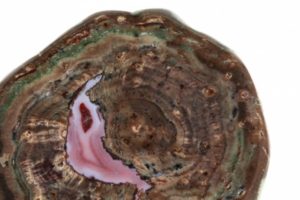
agate lithophyse from the Esterel in France
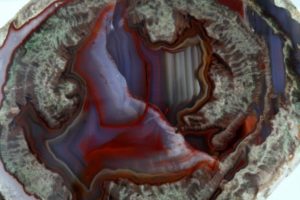
agate from France
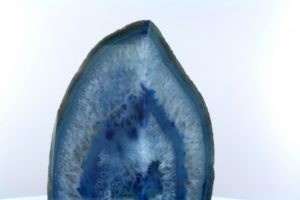
blue colored agate from Brazil
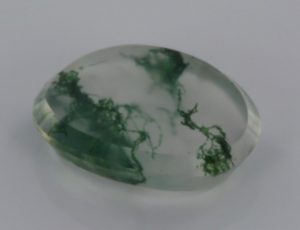
moss agate cabochon cut
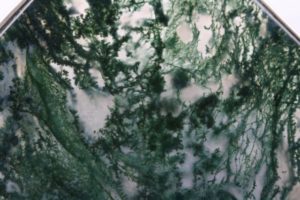
thin slice of moss agate in a precious box
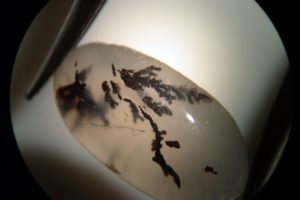
dendritic agate
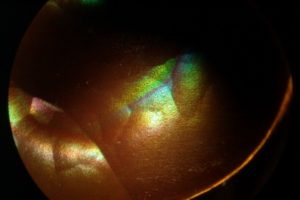
solid type inclusions of hematite causing the iridescence
Detailed sheet
agate
This is a quartz, more exactly a transluscent chalcedony (itself a variety of cryptocrystalline quartz) which shows concentric bands sometimes containing opale. Comes in many colors, banded, forming concentric bands, more or less circular up to oval.
Their formation is so far discuted : or by gradual filling and rhythmic crystallization in the cavity of rock or the formation of the agate and of the rock are simultaneous or colloid solutions, rather than liquids, would flow through the agate walls.
Its name is supposedly derived from the river Achates, in Sicily, where it was discovered, but also from the arabic word for “new born tangled hair”.
The Egyptians made necklaces, sacred scarabes with agate. This was one of the twelve stones of the High Priest, Aaron’s quadrangular pectoral, symbolizing Asher, Zilpa’s son. The Greeks made wonderful cameos, imitated by the Romans who cut bowls and vases out of agate, such as the ewer conserved in the Louvre.
At the Renaissance, bowls, vases, and other kind of objects were the pride of the princely courts, especially at Florence where we can still see beautiful mosaics. its workmanship, in the Palatinat, goes back to the 1500, thanks to the deposits (now worked out) and to the presence of water to animate the sandstone grindstones for the polishing.

CHEMICAL CHARACTERISTICS
SiO2
silicon dioxide, microcrystalline silica

PHYSICAL CHARACTERISTICS
Main color
brown
Other colors
white, blue, grey, yellow, black, orange, pink, red, green, purple
comes in all colors
Color of streak
white
Luster
vitreous
Hardness
6.5 to 7.0
Density
2.60 to 2.65
Cleavage
none
Fracture
uneven

OPTICAL PROPERTIES
Transparency
translucent
Refractive index
1.530 - 1.540
Double refraction
0.004
very weak
visible double refraction
No
Dispersion
aucune
Pleochroism
absent
Number of colors
1
Fluorescence
variable
depends on the colors and on the dyes
Inclusions
dentrites, chlorite…

CRYSTALS PROPERTIES
microcrystalline quartz
microcrystalline aggregates

OTHER INFORMATIONS
Astrological sign
Aquarius, Leo, Libra, Scorpio

APPROACHING GEMS
Exploited
sites
They are “hidden” as nodules or geodes with sizes ranging from a fraction of an inch to several yards, often found in volcanic rocks poor in silica. It shows a gangue, tha agate itself which sometimes, does not fill the cavity all over, and the light often allows crystals of different sizes to grow up.
The most important agate deposits at the beginning of the 19th century were found in the neighbourhood of Idar-Oberstein/Rhineland-Palatinate, in Germany. These have now been worked out. Nodules were found as large as soccer balloon, with a wide range of beautiful, very intense colors.These could not be dyed.
Nowadays, agate geodes come from the South of Brazil (Rio Grande do Sul), the North or Uruguay, Australia (Queensland), Caucasus, China, United States (Wyoming, Montana…), India, madagascar, Mexico, Mongolia…Production from these countries satisfy reseller (in Uruguay and India they are picked up with the excavator!) but many other deposits exist all over the world.
use in jewelry
It is chiefly used to make ornaments more than as a gemstone for valued jewels.
Agate has been known for 3000 years in the Middle East, it was used to make cylindrical seals, rings, intaglios, cups…
Today it is still used to make cabochon for rings, brooches, pendants, cameos, small decorative objects (inkstands, hashtrays, letter opener, knife handle, small boxes…) and sometimes objets d’art. It is sawed with a diamond saw then polished against a sandstone grindstone.
According to sample, design, or structure of the agate layers such as stars, grass, clouds, there are numerous trade names : enhydric agate (also called enhydro or water stone), monochromic partially filled by water which shines by transparency while moving; dentritic agate and moss, not banded, containing dendrites or chlorite, fire agate with play of glowing colors, eye agate, ring-shaped design arranged around a centerpoint, orbicular agate, slightly different from the previous one, scenic agate, shows landscape-like image through brown dendrites, term not strictly correct, as there are no bandings; layer agate, which layers/bands are about the same size, well alternated, the thickness remains constant, tubular agate flowed trough by former feeding canals (which confirm the theory of the formation by gradual liquid filling up), visible in cross section.
Daily care
and precautions
Good resistance to cleaning products, scratches, shocks and heat. Easy to care, washable with dishwashing liquid, then to be rinsed out with soft water.
imitations and
treatments
Often artificially colored because the more productive deposits do not provide necessarily lively patterns and attractive colors.
The Romans already knew the art of dyeing!In Palatinate, it has been practiced for more than one century and a half. Dyeing result depends on the porosity and the opal and water content of the individual layer of the agate and each manipulator would keep secret the details of the process of inorganic pigments fabrication. Some have adopted very aggressive shades, almost “unnatural”: vivid red (natural yellow areas turn red when heated, immersion in iron nitrate, iron oxyde) ; vivid lemon yellow (iron chloride impregnation followed by heating) ; brown (immersion in sugar solution before heating, or cobalt nitrate use) ; black (immersion in a honey and sugar concentrated solution followed by immersion in hot sulfuric acid) ; bright green (impregnation in Chromium alum or nickel nitrate before high temperature heating) ; deep blue (immersion in a potassium ferrocyanide and subsequent warming in a solution of ferrous sulphate), also called Prussian blue.
Historical
healing properties
Acording to some old traditions, agate would spark off inheritance, give informations to find treasure. It would attract women and would allow to distinguish between true friends and false friends. It would wipe off worries, fears. It would symbolize longevity, improve courage against adversity, take away from dangers.
It would be related to sexual organs, would help pregnant women protecting life. It is said that it should be worn next to the skin, as a disc, and fix one at the window to allow the sun to go through while entering the room.
In the Middle Age, it was considerated to treat infections, epilepsy, somnanbulism, and the Arabs used to treat delirium and mental troubles by drinking powdered agate mixed with apple juice.
According to their colors agate would act in relation with the chakras : orange agates would be related to the root chakra, energies center which stimulates the vital force of the organism. Its warm color would warm up while relaxing, would provide detente, would reassure, and would allow to enjoy a happy and blooming life.
The simple agate, grey or brown is a anchorage stone, related to the earth, to the roots, it provides stability in a material world.
All the zodical signs can wear agate, according to its color.
historical stones
and related legends
Farnese cup from the museum of Napoli, the Great Cameo of the Sainte-Chapelle, in the Cabinet des médailles, the Cup of the Ptolemies are among the more remarkable masterpieces.
Venez visitez
notre site web
voillot-joaillier.fr
Lorem ipsum dolor sit amet, consectetur adipiscing elit. Ut elit tellus, luctus nec ullamcorper mattis, pulvinar dapibus leo.Lorem ipsum dolor sit amet, consectetur adipiscing elit. Ut elit tellus, luctus nec ullamcorper mattis, pulvinar dapibus leo consectetur adipiscing elit. Ut elit tellus, luctus nec.

